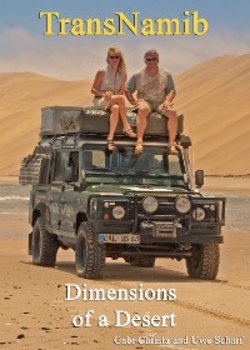Читать книгу TransNamib: Dimensions of a Desert - Gabi Christa - Страница 11
ОглавлениеAcquiring the Visa for Angola
I am cold; an icy wind blows through the zippers of the tent. The fasteners get blown about all night, playing their unnerving tune. Sleep doesn’t come to me anyway, as I am busy wondering whether TransNamib will work out as planned.
The itinerary is dictated by the exciting interaction of high and low tides and the full moon above the Angolan coast. We want to get as far as possible along the coast, up to the northernmost extension of the Namib Desert, the town of Namibe.
But before this, we’ll visit the “Heart of the Namib”, the desert strip between Lüderitz and Walvis Bay and – our immigration to Angola hasn’t been sorted out yet. A phone call with Mr Schulze pops into my mind again. He had been doing business in Angola for some time and the passport of one of his employees had been sent to us, by accident. He had already made a number of fruitless calls to the embassy, trying to trace the passports. Quite often, the calls weren’t answered and the staff hardly spoke English. It was clear that patience was needed to acquire visas to Angola. The ordinary tourist required an invitation. We had applied to the Flamingo Lodge successfully. Now, we had to tackle the bureaucratic hurdles. The application forms were available from the Angolan embassy, which sent them as Word documents. The invitation had to include the names of those who wished to visit, completed application forms, two passport photographs, a photocopy of valid certificates of vaccination for yellow fever and, if applicable, photocopies of previously issued Angolan visas along with administration fees of 60 Euro per person. It had to be handed in at the Angolan embassy in a prepaid and self-addressed envelope. It took 15 working days to be processed. Visas are issued by the embassy up to 60 days ahead of the trip but on Wednesdays only – and are valid for 30 days from the date of entry.[2]
Since our trip, the rules have changed and an invitation is no longer required but in order to obtain the visa you still have to provide a bank statement.
Due to inexplicable delays by the authorities, Uwe had to travel in advance to South Africa on his second passport. I only took his passport with the Angolan visa in it later on when following in his footsteps. In spite of all his efforts, even Heiko had to travel without an Angolan visa in his passport. He received it only some days later from Anke, who had brought it along to Walvis Bay. Thus, at the very last moment, all the passports had been returned to their owners. I was just hoping that the officials at the Angolan border would not find anything to complain about.
Mr Schulze asked me why we were going to stay in Angola and when I told him about our dream of TransNamib, I guess he was shaking his head in disbelief. He mentioned the danger of land mines. I had read about all the horrors of land mines on the internet. In southern Africa, Angola is one of the most affected countries. Although intensive de-mining has been going on for years, every year thousands get mutilated or killed by these mines which were deployed during the civil war. Not only Angola is affected – in 87 countries worldwide about 60.000.000 land mines are still lying in the ground. Up to 100.000 children each year are mutilated or killed by exploding mines. People have to dig up the soil and to graze their livestock for a living. Thus, everyday life in the former war zones becomes an “Angolan Roulette”.
I climb down the ladder from the rooftop tent and am exposed to the cold morning. Shivering, I watch the sunrise. TransNamib has only just started, we have been on the road for just one day and I have already been brooding and freezing for half a night. A cup of hot coffee does me good, blowing the sorrow-stricken clouds out of my mind.
